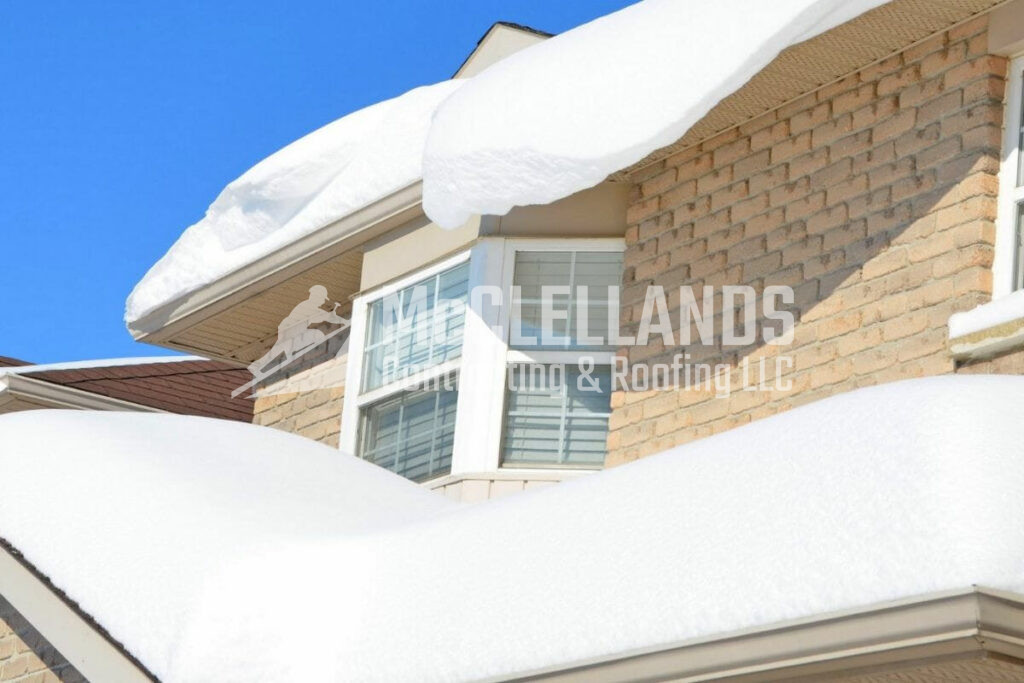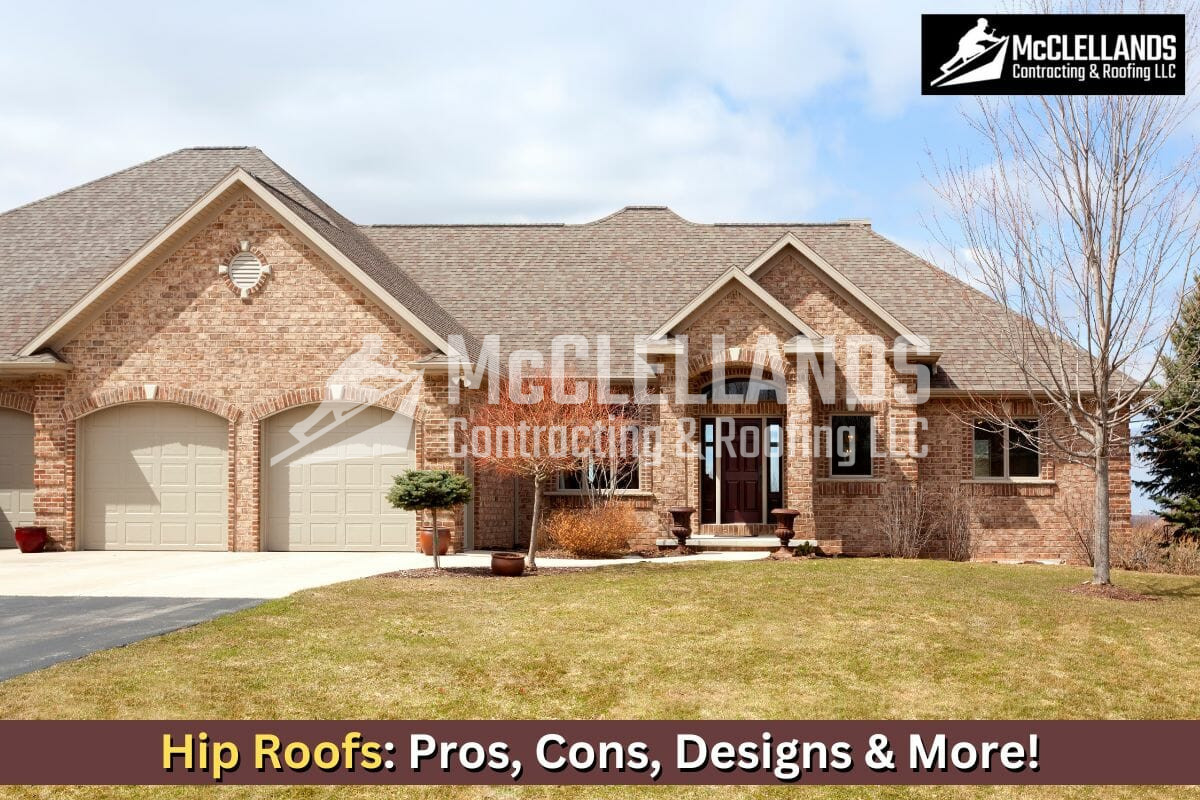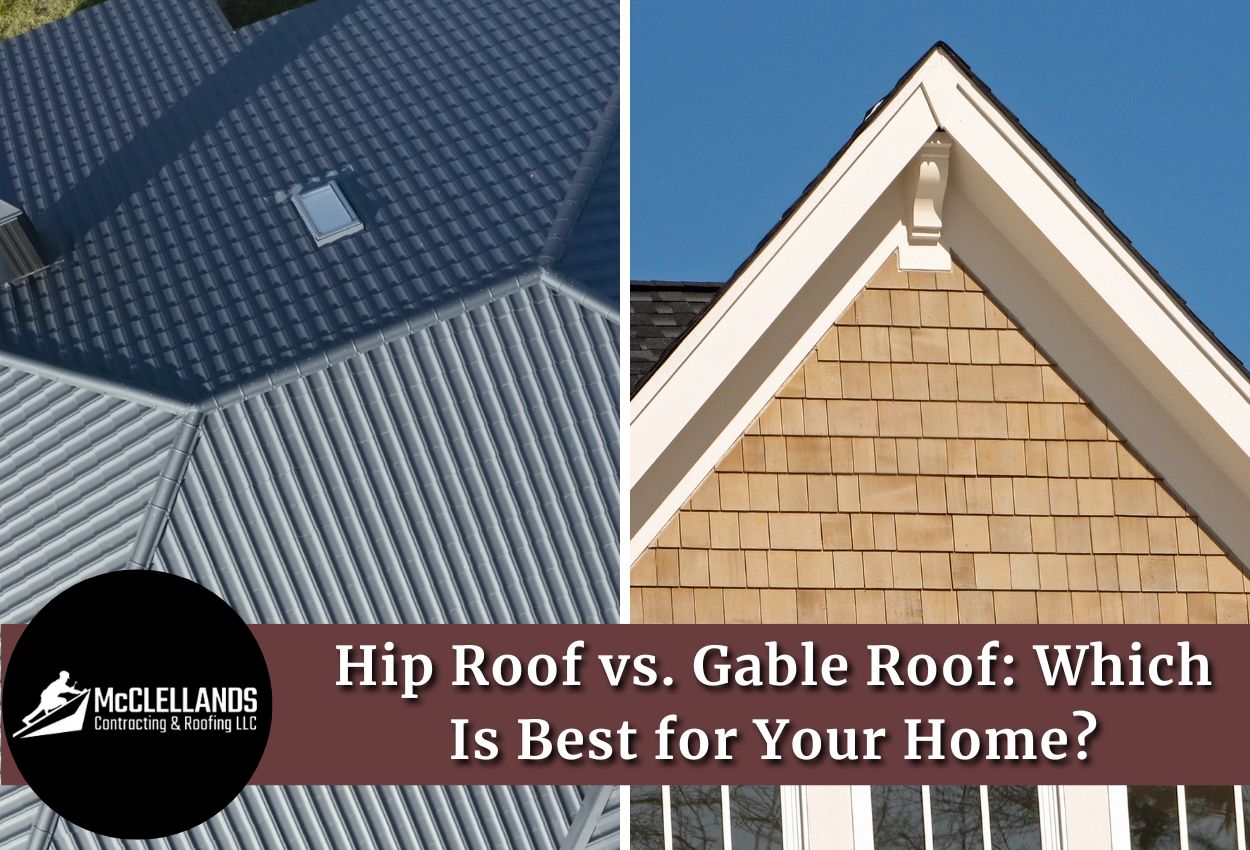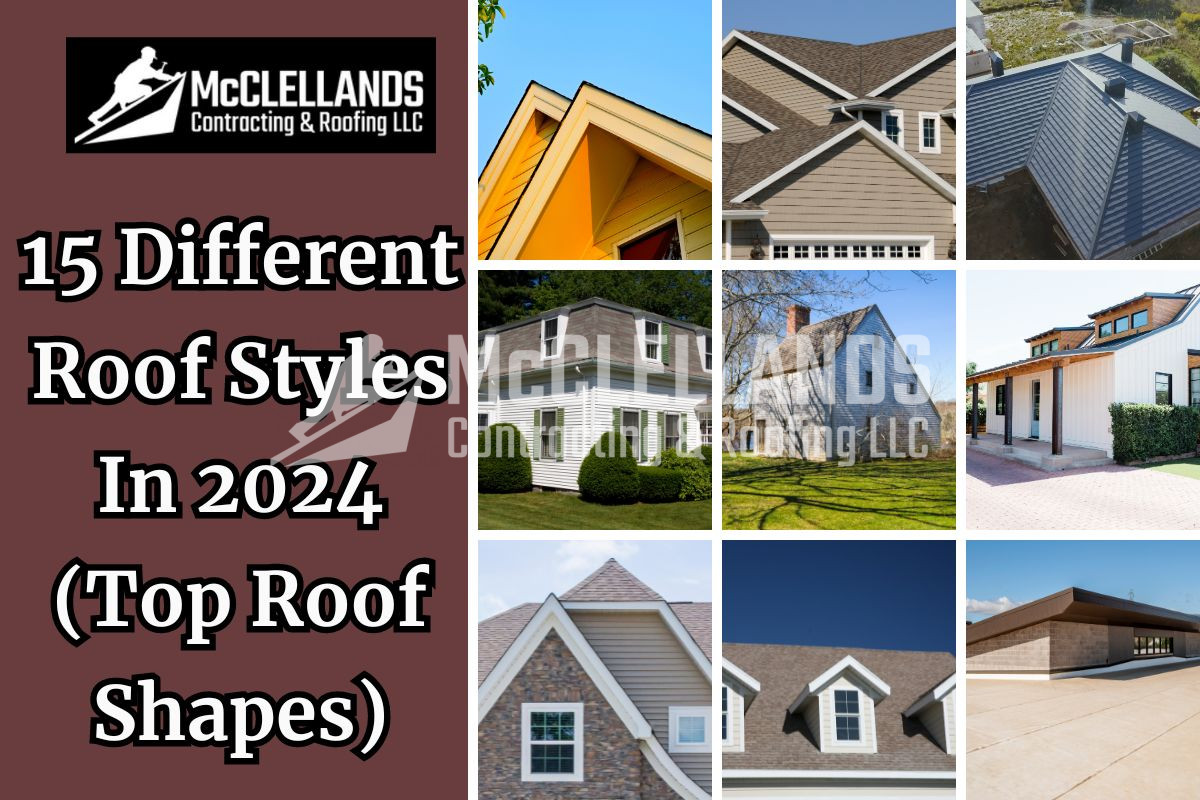Are you exploring new roof designs for your home? Whether you're building a new home or getting a roof replacement, understanding the ins and outs of different roof designs will help you select the right style, which plays a huge part in building a safe and appealing home.
As a seasoned roofer with a passion for crafting sturdy and visually appealing roofs, I'm thrilled to talk about one of the most popular roofing styles: the hip roof. In this comprehensive guide, I'll walk you through everything you need to know about the pros, cons, design elements, and more.
Let's get started!
What Is A Hip Roof?
A hip roof, also known as a hip and valley roof, is more than just a roof — it's a masterpiece of architectural design that combines both form and function. Unlike a traditional gable roof that slopes down on two sides, a hip roof slopes on all four sides. Each side of the roof forms a gentle slope towards the walls, creating a harmonious pyramid-like structure that not only looks appealing but also offers exceptional durability.
The Pros: How a Hipped Roof Design Benefits Homeowners
1. Excellent Stability And Wind Resistance
One of the standout advantages of a hip roof is its stability. The slopes on all sides intersect at the top, making it incredibly resistant to strong winds and harsh weather conditions. This design minimizes the chances of wind getting under the roof and causing damage. Whether you're in a windy coastal region or an area prone to storms, a hip roof has your home covered.
2. Aesthetic Allure and Versatility
Hip style roofs are an architect's playground, and their aesthetic appeal is undeniable. The symmetrical design adds a touch of elegance to any structure, making it a preferred choice for most home designs, including traditional, craftsman and modern architecture.
Furthermore, the clean lines and balanced look of a hip roof provide an excellent canvas for showcasing additional features, such as chimneys, skylights, and dormers.
3. Rain and Snow Shedding

Living in an area with heavy rainfall or frequent snowfall? A hip roof is your ally against water and snow buildup. The slanted sides prevent water from pooling, directing it away from your roof's vulnerable spots. This proactive shedding reduces the risk of leaks and water damage, ensuring your home stays dry and comfortable.
4. Enhanced Durability
The very design of this roof contributes to its strength and longevity. With its four sloping sides, the roof hips distribute weight evenly. This makes this roofing style better equipped to handle the stresses of varying weather conditions and the passage of time. The structural integrity translates into a roof that requires less frequent repairs and maintenance.
5. Efficient Use of Space
The interior benefits of a hip roof are equally compelling. The inward slope of the sides frees up additional living space within the upper levels of your home. This bonus space, often referred to as a half-story, can be used for storage, an extra bedroom, or a cozy attic retreat.
Exploring Some Common Concerns Of Hip-Style Roofs
While hip roofs benefit many homes, they may not be a good option in all homes. Let’s understand some potential drawbacks of this roofing style.
Construction Complexity
While the design of a hip roof is a marvel, it does come with a degree of complexity in construction. The multiple angles and slopes require precise measurements and skilled craftsmanship, which might translate to slightly higher labor costs.
Limited Eaves for Shade
Compared to gable roofs, hip roofs have shorter eaves. While this adds to the sleek and compact appearance, it does mean less shade for windows and outdoor areas. This limitation can impact energy efficiency, especially in hot climates.
Wondering if this roof is the best type of roof for you? Find out here.
Who Can Get Maximum Benefits from a Hipped Roof Design?
Weather-Prone Areas: With their sturdy design, hip-style roofs excel in areas with strong winds and heavy snow.
Architects and Designers: For those seeking aesthetic variety, hip roofs allow creative combinations and unique styles.
Space Optimization: Homeowners wanting extra space will appreciate the extra attic or storage space provided by a hip roof.
Eco-Conscious Individuals: Incorporating green roofing elements into hipped designs appeals to sustainability enthusiasts.
Charm Seekers: Dutch hip roofs offer rustic elegance, perfect for a touch of traditional charm.
One common topic homeowners often debate is hip roofs vs. gable roofs. So let’s talk about it.
Hip Roof vs. Gable Roof
Here are some critical parameters for comparing hip and gable roofs:
Aesthetics and Architectural Style
Hip roofs offer seamless balance from all angles, fitting various architectural styles, while gable roofs feature charming triangular gable ends, a classic touch for traditional and simple designs.
Wind and Weather Resistance
Hip roofs stand strong against the wind with slopes on all sides, suiting storm-prone areas, whereas gable roofs boast better ventilation through gable ends, potentially requiring extra reinforcement in strong winds.
Roof Stability
Hip roofs are rock-solid due to inward slopes, perfect for areas with heavy snow or winds, whereas gable roofs, with their triangular shape, may need added care in extreme weather conditions.
Space Utilization
Innovative hip roofs provide extra attic space, offering room for storage or living areas, while steep gable roofs also grant attic space, though not as efficiently as inventive hipped designs.
Construction Complexity
Hip roofs are more complex due to their multiple slopes and angles, while gable roofs offer simpler and often more cost-effective construction methods.
Ventilation and Cooling
Gable roofs allow better attic ventilation through vertical gable ends and have longer eaves, which contributes to providing shade and a cooler interior in warmer climates.
Creative Flexibility
Hip roofs maintain consistent slopes for a uniform look, while gable roofs offer creative freedom with diverse gable end designs and pitch options.
Regional Considerations
Hip roofs excel in areas with challenging weather, such as heavy rainfall, snow, and strong winds, offering optimal protection, while gable roofs are suitable for regions with milder weather conditions and less demanding wind and snow loads.
If you are ready to install a hipped roof, let’s explore some popular designs:
Designing Your Hip Roof
From simple to architecturally complicated styles, here are some stunning hip roofing options for you:
Simple Roof Hips
Picture a cozy pyramid-like design where all four sides come together at a charming peak. This style is a solid choice for structures with a square or almost square blueprint, offering a touch of symmetry and stability.
Cross Hip Roof (T or Cruciform Roof)
A cross hip roof, as the name suggests, forms a lovely cross shape. This roof has other ridges at a right angle to the main one, which adds a bit of flair to any property. This nifty idea is perfect for spaces where you want a bit of complexity while keeping that hip roof design intact.
Half-Hipped Roof (Clipped Gable)
Think of it as a hip roof with a friendly nod to gable roofs. You get two gable ends and two hipped sides, creating a harmonious blend of the two styles for the best of both design worlds.
Pyramid Hip Roof
This roof design has four sides coming together to form a neat pyramid at the top. Compared to a traditional hip roof, this style does not have a ridge. This adorable design often graces structures like cozy gazebos or dainty houses.
Dutch Hip Roof (Hip and Valley Roof)
A Dutch hip roof gives a nod to the traditional gable roof. With gables on a couple of sides, it not only looks intriguing but also offers some extra room inside. No wonder it’s a common barn roof design – it has plenty of rustic charm.
Bonnet Roof (Kicked Eaves Roof)
Visualize a roof with a smart twist, both a steeper upper slope and a gentler lower one. This clever design gives you larger eaves that provide much-needed shade, making it perfect for sunny spots.
Curved Hipped Roof
This is a variant that has decided to embrace its artistic side – its sides are gently curved, giving your structure a unique touch. It might not be common, but it definitely grabs your attention.
Each of these hip roofing styles brings its unique charm to the table. Apart from these, you can consider other types of roof styles, like a classic gambrel roof design. The key is to pick the one that matches your structure's style, local climate, and practical needs.
If you are looking to build a hip roof for your home in Pittsburgh, we’re here to help.
Get Expert Insights on Your Roofing Project in Pennsylvania
At McClellands Contracting and Roofing, we bring a wealth of expertise to the table, ensuring that your roofing project is in the hands of professionals who understand the nuances of the local climate and architectural preferences. Call us at (412) 353-5660 to benefit from our personalized recommendations and guidance. We’ll be happy to help you with a free consultation and estimate on your roof replacement project in Pittsburgh and the surrounding areas in Pennsylvania.



